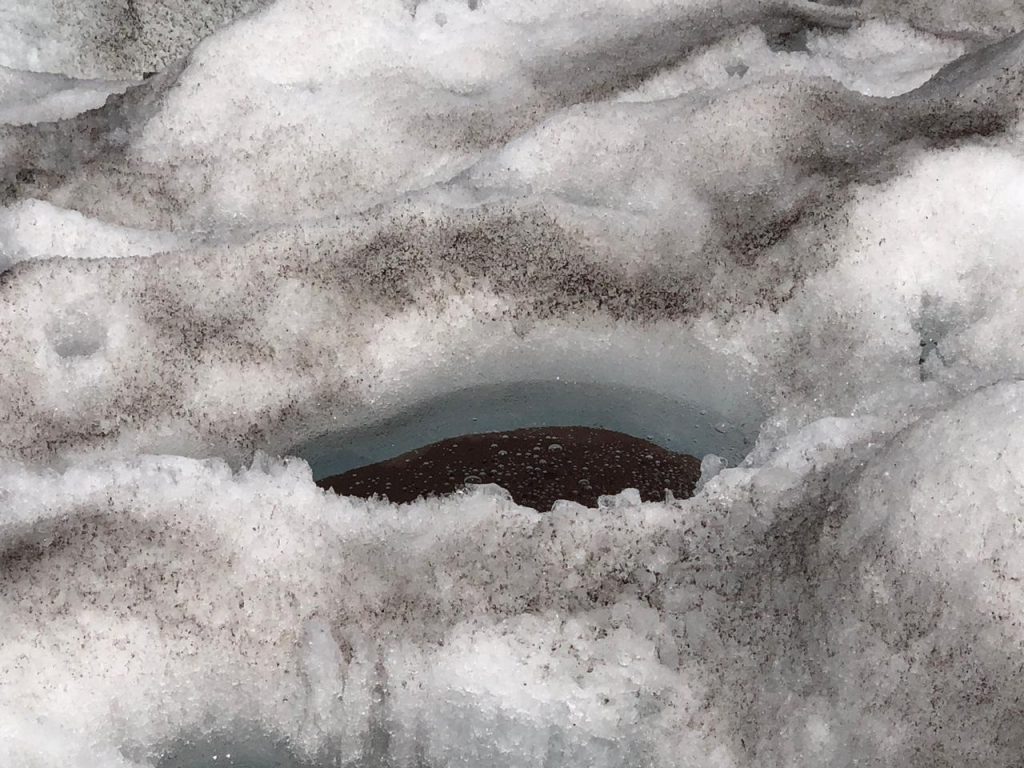RIO DE JANEIRO, BRAZIL – While studying the impact of radiation and other pollutants on the melting of glaciers in the Antisana volcano, one of Ecuador’s 7 snow-capped mountains, a group of researchers found species of algae, diatoms, hitherto unknown to science.
The finding was made by a team from the SEK International University (UISEK) in Quito in cooperation with the University of León (Spain), which has been investigating watersheds and glaciers since 2016 using diatoms, microscopic algae that contain a silica structure and a crystal skeleton, considered good indicators of water quality.

Called “Biotic index of water quality for Ecuador using diatoms as bioindicators,” the study is a pioneer in the country for using these indicators in glaciers, explains Susana Chamorro, professor of the Faculty of Engineering and Environmental Sciences of the UISEK, in charge of the research.
“We wanted to find out what is happening in Ecuador’s glaciers by working with cryoconite, which are like lagoons that form inside the glaciers,” the researcher told Efe.
GLACIERS AND LIFE
Glaciers play a crucial role in supplying water to the country and the Amazon macro-basin. Still, they are exposed to many pollutants such as dust deposits, usually volcanic, which accumulate and are converted by high radiation into small lagoons known as cryoconite. Their sediment, these unicellular algae grow.
Studies on glaciers in Antarctica have revealed that these sediments hasten the melting of glaciers, which prompted the researchers to investigate whether these conditions were also present in Ecuador’s 7 large glaciers, one of the study’s main assumptions.
The known literature on glaciers suggests that life is not usually present in these ecosystems in extreme conditions, something that the study in Ecuadorian territory has refuted.
“We have broken this paradigm; there is life in our glaciers, more than is found in other natural conditions or similar ecosystems,” says Chamorro.
At the moment, in the 5,700-meter Antisana volcano, “new species of diatoms have been found for science, not only for Ecuador,” said the study’s head researcher.
UNKNOWN ECOSYSTEMS
Located in the Ecuador Mountain Range, it is a potentially active volcano. It has been the first in which new species of algae have been found, the description of which will be published in a forthcoming scientific journal.
The team is also analyzing the Cotopaxi volcano, at almost 5,900 meters, an investigation that is still in progress but yielding different components.
“These ecosystems have not been studied, and therefore, we will find new species,” says the scientist, emphasizing the specificity of glaciers with unique features because they are in the tropics where there is no marked seasonality.
Ecuador is home to 7 glaciers: Antisana, Cotopaxi, Chimborazo, Cayambe, the Ilinizas (north and south), El Altar, and Carihuairazo, all of them located in volcanic craters that are affected by the greenhouse effect.
The researchers’ goal is to study all 7 and, by 2023, complete a study that can provide a tool for water managers in the country.
WHY DO GLACIERS MELT?
Another line is to determine if the presence of cryoconite, these lagoons formed by the accumulation of sediments carried by the winds, contribute to the melting of glaciers.
“It is necessary to know each of the snow-capped mountains to know what role cryoconite play if there is any link between radiation, climate change, and glaciers,” he concludes.
Meanwhile, the dust found in these frozen lagoons is mostly of volcanic origin and coarse, which has not prevented new species.
Among the diatoms found in the Antisana, some typical oceans, located in a freshwater ecosystem and abundant in form, have drawn the attention of scientists.
One of the assumptions – says Chamorro – is that the winds blowing from the coast or the Amazon may have favored the emergence of this form of life on the top of the snow-capped mountain since the samples show the presence of more than a thousand diatom specimens.
Source: efe

